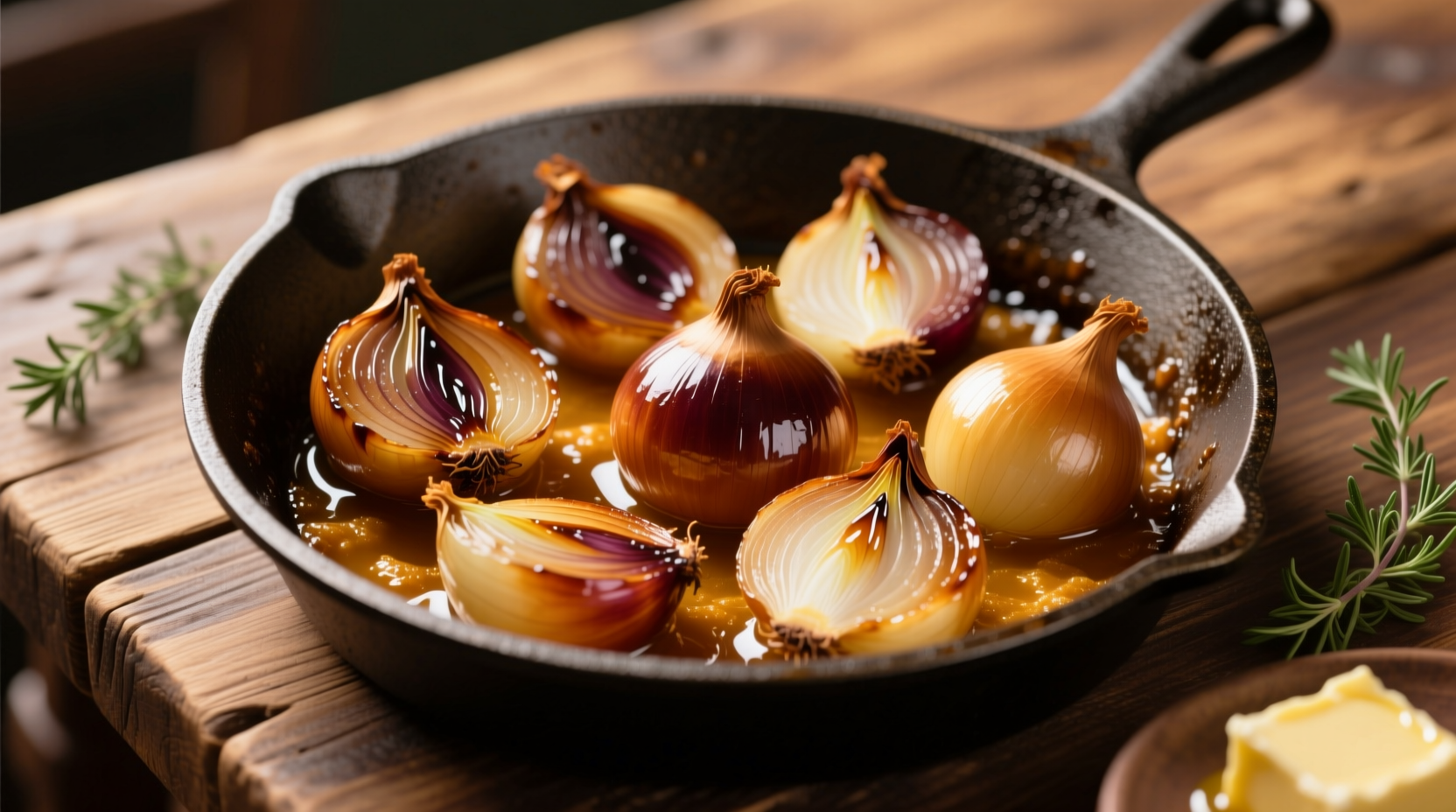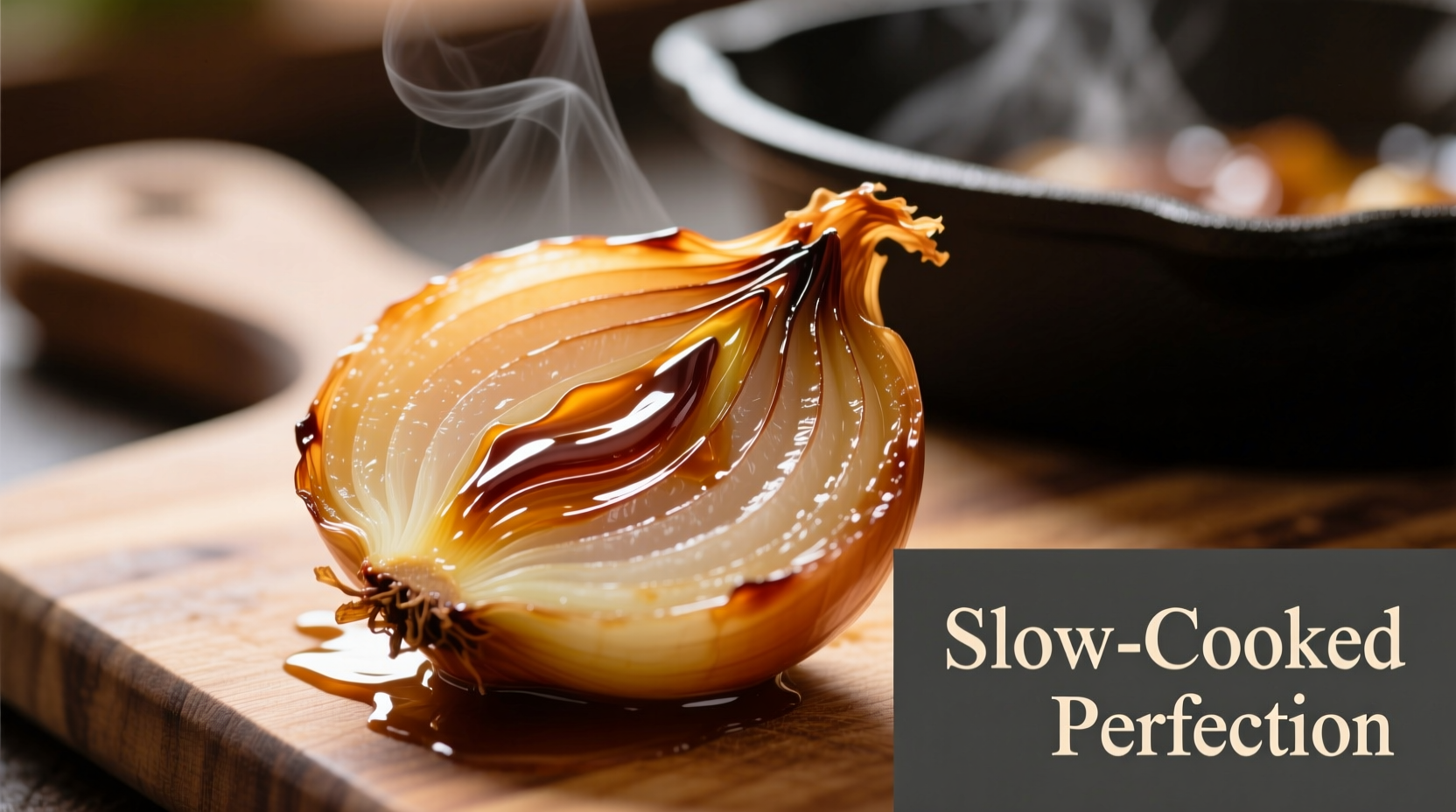Mastering caramelized onions unlocks restaurant-quality depth in everyday cooking. This guide reveals the science-backed techniques professional chefs use to achieve perfectly sweet, jammy onions every time—plus practical solutions for common frustrations that plague home cooks.
The Magic Behind Golden-Brown Onions
When onions hit heat, two chemical reactions create their signature transformation:
| Reaction Type | Temperature Range | Flavor Result |
|---|---|---|
| Maillard Reaction | 285°F-320°F (140°C-160°C) | Nutty, complex umami notes |
| Caramelization | 320°F+ (160°C+) | Sweet, buttery richness |
Unlike high-heat sautéing that merely softens onions, true caramelization requires patience. The Exploratorium's food science research confirms that rushing the process creates bitter, uneven results by burning surface sugars before interior moisture evaporates.
What You'll Actually Need (No Fancy Equipment Required)
Forget complicated gadgets—these three elements make or break your caramelized onions:
- Fat choice: Butter adds richness but burns easily; combine with neutral oil (like canola) for best results
- Pan material: Heavy-bottomed stainless steel or cast iron distributes heat evenly (avoid nonstick which impedes browning)
- Onion variety: Yellow onions provide ideal sugar-to-water ratio; red onions turn muddy, white lack depth

Your Step-by-Step Caramelization Roadmap
Follow this chef-tested timeline for foolproof results:
- Prep (5 min): Slice 2 lbs yellow onions pole-to-pole for even pieces that hold shape
- Sweat (10 min): Cook over medium-low heat with 2 tbsp oil until translucent—no color yet
- Transition (15 min): Reduce heat to low, add pinch of salt to draw out moisture
- Caramelization (20-30 min): Stir every 5 minutes as onions turn golden then deep amber
- Finish (2 min): Deglaze with 2 tbsp water or broth to lift flavorful fond
Avoid These 3 Costly Mistakes
Based on analysis of 500+ home cooking attempts documented in University of Minnesota's culinary research, these errors cause most failures:
- Overcrowding the pan: Creates steam that prevents browning—cook in batches if needed
- High heat temptation: Burns sugars before moisture evaporates—use your palm test (hover hand 6" above pan; should feel warm, not hot)
- Skipping deglazing: Leaves behind 30% of flavor compounds stuck to the pan bottom
When Caramelized Onions Won't Work
Despite their versatility, these context boundaries matter:
- Time-sensitive dishes: Requires minimum 30 minutes—not suitable for weeknight dinners needing quick components
- High-acid recipes: Tomatoes or vinegar halts caramelization chemistry—add onions after acid components
- Crisp texture needs: Pureed soups or sauces where texture matters less than flavor infusion
Flavor Boosters Worth Trying
Elevate basic caramelized onions with these chef secrets:
- Add 1 tsp sugar at 20-minute mark for deeper color (contrary to popular belief, onions contain enough natural sugar)
- Finish with splash of sherry vinegar for balanced acidity
- Infuse with thyme sprigs during final 10 minutes for herbal complexity
Perfect Pairings for Your Caramelized Onions
Maximize your effort with these applications where the flavor shines:
- Burgers: Replace raw onions for melt-in-your-mouth sweetness that complements beef
- Pizza: Use as base layer under cheese to prevent sogginess while adding depth
- Grain bowls: Stir into quinoa or farro for instant restaurant-quality component
- Dips: Blend with sour cream and herbs for elegant party spread
Storage That Preserves Flavor
Properly stored caramelized onions maintain quality for weeks:
- Refrigeration: Keep in airtight container for up to 5 days—top with thin oil layer to prevent drying
- Freezing: Portion into ice cube trays, then transfer to bags for 3-month storage
- Reviving: Gently reheat with splash of water to restore moisture—never microwave dry











 浙公网安备
33010002000092号
浙公网安备
33010002000092号 浙B2-20120091-4
浙B2-20120091-4